
Millions of US homes use heating oil or propane for home heating during winters. If you are one of these households, one of the biggest problems you may have is checking your fuel levels and scheduling a heating fuel delivery on time. Heating oil is important for your home, but many still fail to maintain this crucial system.
Oil tanks can be the least of your priority during the hustle and bustle of the winter season. The bad news is that the harshest days of winter are when it is crucial to have a full oil tank. As a result, even highly responsible homeowners run out of fuel during the cold season.
Some of the likely causes of an empty fuel tank are:
- Failing to monitor the oil levels
- Lacking the money needed for an oil delivery
- A tank system leak
- Your fuel was stolen
Regardless, running out of fuel oil can significantly affect your and your family’s well-being and daily activities. Preventing this from happening shouldn’t be hard. When you understand the risks of running out of fuel, you can make sure that your tank stays full throughout the year and take simple steps to prevent an empty fuel tank.
Why You Should Avoid Running out of Heating Oil
Contents
- 1 Why You Should Avoid Running out of Heating Oil
- 2 Ways to Prevent Running out of Oil
- 3 Call PFO Heating & Air Conditioning For Reliable Heating Oil Deliveries
It may seem like it isn’t a big deal that you have no preventative measures in place, especially if running out of fuel has never happened to you. However, even the most careful homeowners can forget to get an oil refill on time. This is a problem that causes more harm than it may initially seem.
Some pressing reasons make it necessary to buy oil in a timely manner. Aside from the inconvenience of having a cold home with no hot water, here are several risks that can happen if you do not take steps to prevent the oil in your tank from running out:
Added Heating Fuel Expenses

Homeowners commonly run out of heating oil during mid- or end of winter. The bad news is that this is also when the heating oil prices are at their peak. This means you pay the highest heating oil cost when you run out of fuel between October and March. This can eventually add up to additional dollars spent.
Aside from paying more for the oil, you also have to pay more for an emergency delivery service than a regular fill-up. It will have a significantly lower overall cost to get small fill-ups throughout the year than an emergency service.
Heating Oil Tank Sludge Buildup
The bottom of heating oil tanks usually has sludge and debris buildup. However, they typically do not cause damage to your system unless your tank becomes empty.
Low oil levels mean the sludge is sucked into the supply line with the remaining oil. If this doesn’t cause a clog, the buildup will travel to a filter that will clog wholly or partially. Blocked fuel lines or filters cause lower efficiency. These issues can also shut down your system completely, a problem that requires professional attention.
Manual Heating System Reset
Sometimes, it may only take a simple press of a button to reset your heating oil system after it runs out of fuel. However, you need a pilot light reset if the pilot light goes off.
According to the law, a pilot light reset needs to be done by a professional. This process includes bleeding the oil line and replacing any clogged filters. This may result in you spending hundreds more than what you will spend in a simple oil fill.
Ways to Prevent Running out of Oil
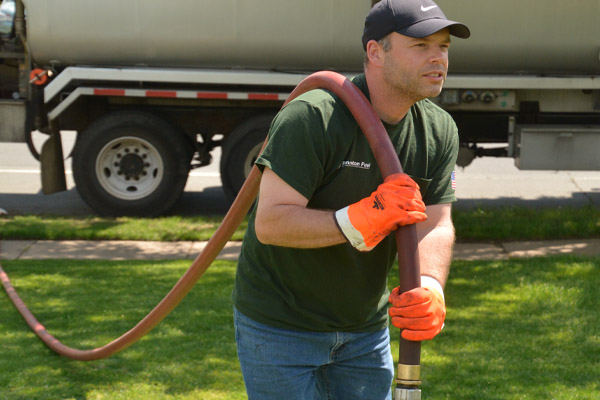
Running out of heating oil is lined with many risks, so there is no need to wait to ensure your home is protected. Be proactive in handling your home’s heating needs and take preventative steps to keep oil in your tank year round.
The industry’s general rule is that you should always have at least one-third to one-quarter of oil in your tank. When you reach that point, then you should schedule a delivery service. However, you do not have to keep manually checking your heating oil tank levels. Services and technologies are available for you to use, so you can take preventative measures without the extra time and stress of walking back and forth to your tank to monitor the levels.
Automatic Oil Delivery
Automatic oil delivery services mean you do not have to worry about running out of oil ever again. The best part is you don’t have to do anything. You don’t have to check your tank and calculate when you need to schedule your next oil delivery. Automatic delivery programs allow you to relax as your oil company will take care of everything for you.
Your oil provider tracks your home’s oil consumption using a non-invasive technology when you sign up for automatic delivery. This measures your approximate heating oil usage. They utilize simple information regarding your household and combine it with calculated heating degree days (HDD). The HDD is the measurement of the amount of energy needed for home heating per the outside temperature.
The calculation for HDD requires the fuel tank size, the house’s square footage, and previous data about your heating needs. Your provider can identify when your tank will be at one-quarter full with high accuracy using this information. They will then contact you directly for the delivery schedule.
Pros of Automatic Oil Delivery
- It is the most popular delivery for most heating oil companies. It also has a high success rate in preventing homes from having empty tanks.
- It saves you a lot of money than any other preventative measure. Most providers offer rewards such as discounted oil prices when you sign up for this service. These savings can significantly add up.
- You will not receive oil you don’t need or want, as this system is based on your former heating history and your home’s unique needs.
- You do not have to fret regarding invasive tank monitoring as companies use non-intrusive calculation methods.
Cons of Automatic Heating Oil Delivery
- The system doesn’t account for unexpected heat increases. For instance, you may have visitors who use a lot of hot water over the holidays, or you are going on vacation and don’t need heating as much. You have to make an effort to let your oil company know so they can make delivery schedule adjustments.
- To get the most accurate results, you likely need to make a commitment with one supplier for a certain period. This means you cannot shop around for different rates year round.
Oil Tank Monitoring Apps & Smart Meters
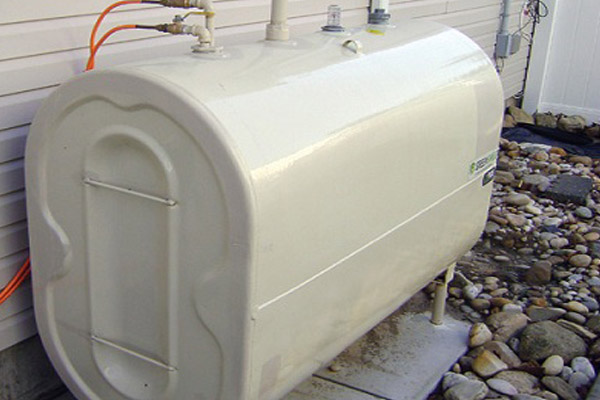
Smart technology is present in almost all possible industries. All parts of your home have technologically advanced alternatives, from smart security systems, cookware, and garbage bins, to thermostats. This also includes the heating oil industry by introducing smart oil tank meters.
This device allows you to instantly check the heating costs, oil tank levels, and consumption from any part of your home or even from 1,000 miles away. The smart software sends the data to your phone or laptop using a sensor attached to your oil tank.
Pros of Smart Meters
- You are notified of potential oil theft thanks to alarms built into many systems.
- Most smart systems tell you that there are low oil levels as soon as they happen, so you have time to notify your supplier.
Cons of Smart Meters
- Smart meters are one of the expensive oil tracking alternatives. They have an estimated cost of $100 or more.
- There have been reports regarding smart monitoring software errors, and they have gained media attention as there have been cases of 50% inaccuracies in electricity monitoring systems. Most smart oil monitoring software users may find them accurate, but these occasional inaccuracies should be accounted for.
- Most smart meters only alert you and not your oil supplier of low tank levels. You will have to call your oil provider immediately, so you don’t run out of oil.
Smart meter installation shouldn’t be a do-it-yourself project. Have a professional help you with it. PFO Heating & Air Conditioning can assist you in installing the meters while conducting your annual heating system maintenance. Call us today if you haven’t scheduled oil heating maintenance yet.
Local Oil Tank Monitors
If you want to check the oil level from your home but do not want to have a smartphone or laptop connected to a smart meter, you can use local tank monitoring software instead.
They work similarly to smart meters in that they use a transmitter that is easily attached to your tank. The sensor is linked to a monitor where it sends the local read-out. The monitor is usually plugged into an electrical socket anywhere in your home.
Pros of Local Oil Tank Monitors
- A lot of the monitors are easy to install as the sensor only needs to be placed in the tank, and the monitor is plugged into an outlet. This allows non-smartphone users to enjoy the advantages of a tank read-out system effortlessly.
- The system alerts you via the monitor when there are low oil levels, so you don’t have to guess when to call your oil supplier.
- Local tank monitors have higher accuracy than standard mechanical float gauges. They can also completely replace the need for dipsticks or gauges.
Cons of Local Tank Monitors
- Some monitors can be installed anywhere around your home. However, many must be installed at a certain distance from the tank, so you have less freedom than automatic delivery services and smart meters. Although some mobile monitors are battery-operated and can be taken around your home, most local tank monitors need to be plugged into an electrical outlet and lack mobility.
- Local tank monitors almost have the same price as smart monitoring software in that you also need to spend approximately $100 on tank transmitters and monitoring systems.
- The system usually alerts you of low oil levels, but you still need to call your oil supplier for a refill.
Oil Tank Alert Systems
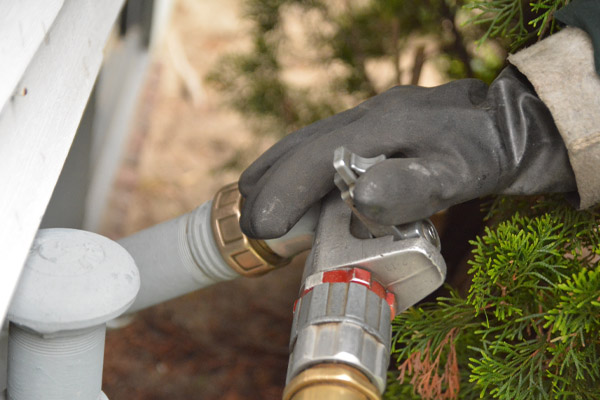
An oil tank alert system will alert you of low oil levels without the noise that smart or local monitoring systems emit. You also don’t need to pay for additional data or settings. You only need to install the gauge in your oil tank. This component will send an alert to your receiver when the oil level reaches a set amount. The alert comes in flashes or beeps, so you know when to call your oil supplier.
Pros of Alert Systems
- They are the best monitoring solution if you are unfamiliar with smart technology. The receiver is a simple device that doesn’t have a screen or a complex user interface. It will alert you that you have low oil levels without unnecessary extra information.
- Alert systems are fairly inexpensive than other tank monitoring software because of their simplicity. A unit can be bought at a relatively low price.
- Many receivers can be powered with batteries, so you can put them in almost any location around your home.
Cons of Alert Systems
- Alarm systems only inform you of low oil levels but don’t provide essential data regarding our oil use. It can be beneficial to know your seasonal and daily trends so you can determine where your money is being wasted. This will help you know how you can reduce your heating expenses, but alert systems do not provide this information.
- These systems also do not let your oil provider know of your low oil levels, much like other forms of tank monitoring. You still need to call your oil supplier as soon as you can to ensure your tank remains filled.
Manually Checking Heating Oil Tank Levels
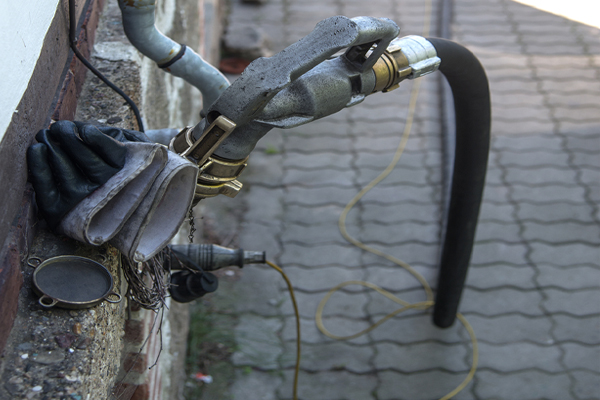
Your budget may be stopping you from signing up for an automatic delivery service or buying a monitoring system. However, you still need to check your oil levels to prevent it from running out.
Experts do not recommend monitoring the oil levels yourself, but you can do it as a last resort. Evaluate the gauge and call your oil supplier when you have low tank levels.
Use a dipstick to check your tank’s oil level. Call your oil provider and schedule a refill before it is one-quarter full. Ensure that the oil in your tank never goes below this mark so that you don’t run out of fuel or cause damage to your tank.
Pros of Manual Oil Monitoring
- It may seem like the most cost-effective option at the onset, but you spend more over time, especially if you do not remember to check your oil levels.
Cons of Manual Oil Monitoring
- Even highly responsible individuals can forget their heating oil, especially because the holiday season can be hectic. Manual monitoring requires you to check your oil levels frequently. Failing to do so can mean you need to have an emergency fill-up or expensive repairs.
- Manual monitoring is the most inconvenient option of all monitoring methods, especially if you have an outdoor tank. The last thing you want to do in the middle of the winter is to walk through the snow and cold winds to check your oil tank.
What You Should Do If You Run Out of Oil
Preventative methods cannot help you put gas back into your empty tank once it has already run out. Do these steps so that this problem doesn’t happen again, but you need to do something immediately so your home heating returns.
These tips will help you with what to do if you completely run out of heating oil:
- Call for emergency delivery service: This can provide you with your much-needed refill in less than a day of your order.
- Use a substitute for home heating: Use diesel fuel or kerosene if you run out of heating oil. This should hold you over until the emergency fill-up service arrives. Go to a nearby gasoline station and fill a gasoline-safe container with fuel. You can also use a fireplace or space heaters to keep you warm until your emergency delivery arrives.
- Insulate your home: Ensure that the excess heat remains inside your home while you wait for your oil delivery. Close all doors and windows tightly, and use weatherstripping to reduce heat loss.
Call PFO Heating & Air Conditioning For Reliable Heating Oil Deliveries
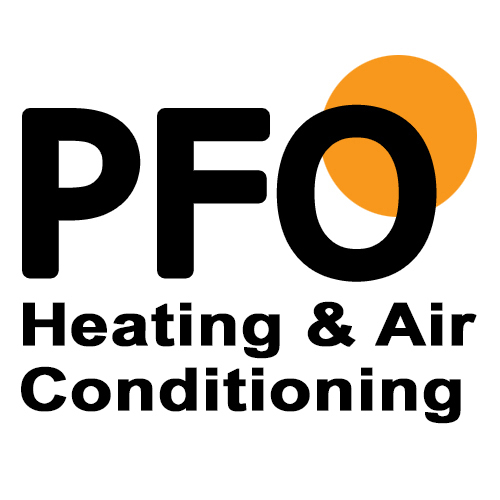
When you’re searching for a reputable heating oil delivery company, you can contact PFO Heating & Air Conditioning.
We offer the best home heating oil delivery and the most reasonable heating oil prices in the area. Our team of expert technicians also provides HVAC services to help improve the performance and efficiency of your heating equipment. Should you require a new heating oil tank for your home or office, you can trust our experts to find the best one to meet your needs.
Call PFO Heating & Air Conditioning today and learn more about the services we offer. We will be happy to answer all your questions and concerns.
Click here to contact us now or call us at (800) 253-9001 to find out more!



